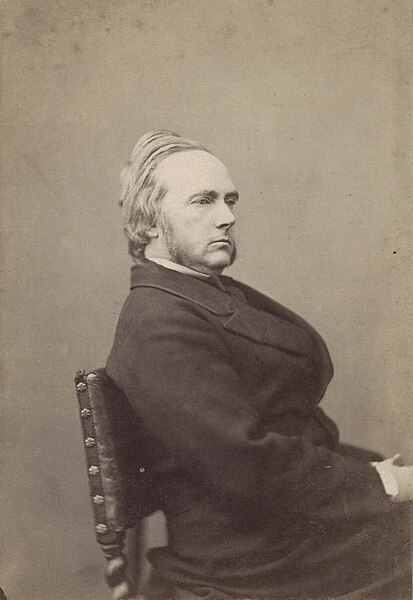George Campbell, 8th Duke of Argyll
George John Douglas Campbell, 8th and 1st Duke of Argyll, was a British polymath and Liberal statesman. He made a significant geological discovery in the 1850s when his tenant found fossilized leaves embedded among basalt lava on the Island of Mull. He also helped to popularize ornithology and was one of the first to give a detailed account of the principles of bird flight in the hopes of advancing artificial aerial navigation. His literary output was extensive writing on topics varying from science and theology to economy and politics. In addition to this, he served prominently in the administrations of Lord Aberdeen, Lord Palmerston, John Russell and William Gladstone.
Portrait by Herbert Rose Barraud, c. 1870-75
Image: George Campbell, 8th Duke of Argyll Signature
1869 caricature of the Duke of Argyll by Carlo Pellegrini
Portrait by George Frederic Watts, c. 1860
Ardencaple Castle, also known as Ardincaple Castle, and sometimes referred to as Ardencaple Castle Light, is a listed building, situated about 1 statute mile (1.6 km) from Helensburgh, Argyll and Bute, Scotland. Today, all that remains of the castle is a tower, perched on the edge of a plateau, looking down on a flat tract of land between it and the shore of the Firth of Clyde. The original castle was thought to have been built sometime in the 12th century, and part of the remains of the original castle were said to have existed in the 19th century. Today, that sole remaining tower is used as a navigational aid for shipping on the Firth of Clyde. Because of its use as a lighthouse the tower has been called Ardencaple Castle Light.
Ardencaple Castle, 1879.
Sketch by Robert Adam of his planned addition to Ardincaple Castle in 1774.
Ardencaple Castle Light. Today the tower is used as a navigational aid for shipping on the Firth of Clyde. Photo by Robie Macauley.
Sometime before 1869








